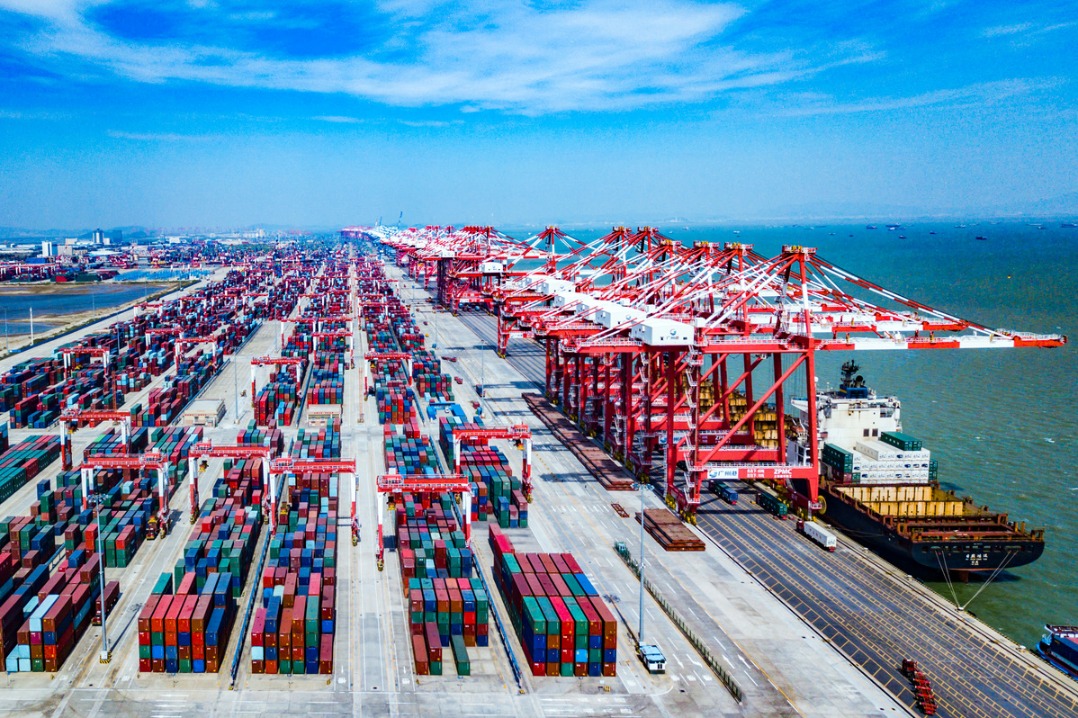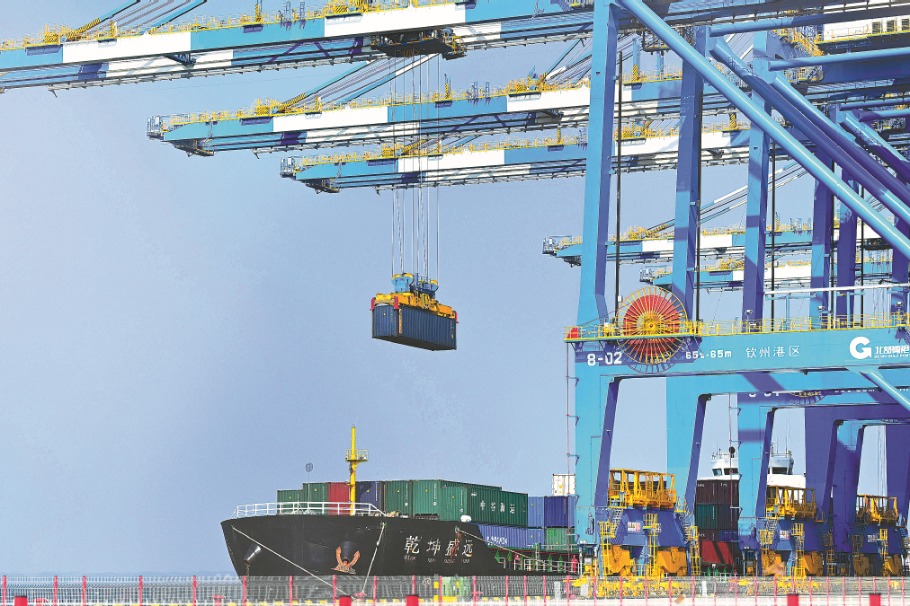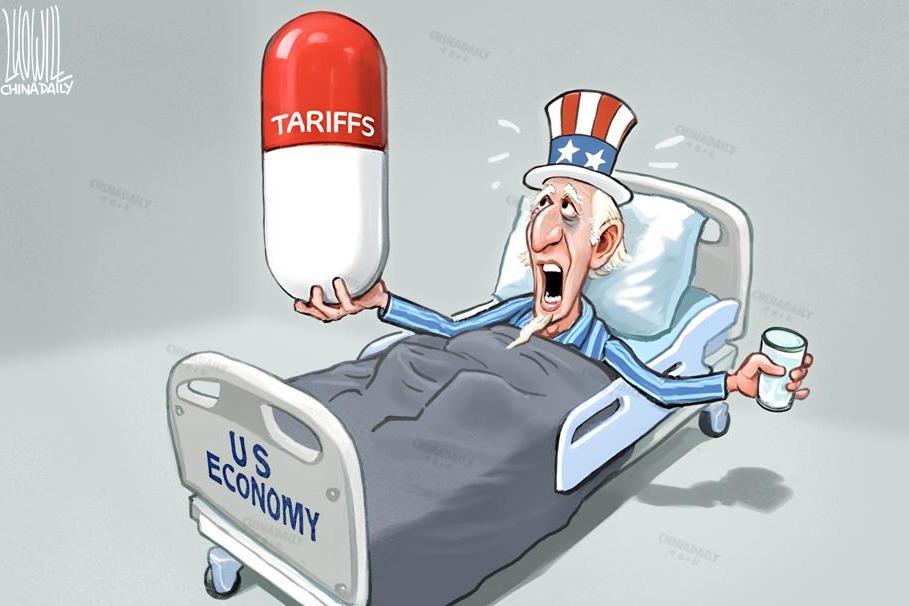Opportunity amid adversity


The pandemic has spurred the transition to more sustainable energy use
The landmark Paris Agreement on climate change aims to limit global warming to below 2 C, preferably to 1.5 C compared to pre-industrial levels. To achieve this, global greenhouse gas emissions should be reduced by half before 2030 from the 2005 levels, and net zero emissions, or carbon neutrality, needs to be attained by 2050.
Countries and enterprises across the world are pushing for energy transformation and have made progress in this regard. Global coal output has been declining since 2014, and investment in coal production has been contracting globally-more than 30 banks and insurers have halted financing or insuring coal electricity projects. In 2019, renewable energy accounted for 72 percent of the net increase in global power generation, with 90 percent coming from solar or wind power. According to statistics from the International Energy Agency, electric vehicle sales increased by 40 percent in 2019 to hit 2.1 million units, making up 2.6 percent of global vehicle sales. Global energy consumption is shifting from an oil-dominated to a multi-source energy pattern.
As the major providers of international public climate capital, the climate financing of multilateral development banks has expanded to $62.6 billion in 2019, representing over 30 percent of its total operations, among which 76 percent were used in climate change mitigation. And the global green bond market has increased to $250 billion in 2019, accounting for 3.5 percent of the total bond market.
By the end of 2019, more than 40 countries and 25 regions had introduced carbon trading or carbon tax policies, representing over 22 percent of global greenhouse gas emissions. Governments have raised about $45 billion from carbon pricing.
The COVID-19 pandemic has had a profound impact on the global response to climate change. The 26th UN Climate Change Conference and the 15th UN Biodiversity Conference have both been postponed to 2021 because of the pandemic, with negotiations on many key issues delayed.
The pandemic has also put huge financial pressure on governments, squeezing the fiscal space to respond to climate change. For example, the stimulus packages adopted by the US government barely touch on environmental and climate issues, and the Donald Trump administration has explicitly supported the fossil-fuel industry.
But it has also been a driver for many countries' shift to low-carbon development. The European Council has unveiled a 750-billion-euro ($920 billion) recovery package, named the Next Generation EU, which aligns COVID-19 emergency response plans with previous strategies on sustainable development. Green expenditure will account for 30 percent of the massive rescue package, which aims to reduce dependence on fossil fuels, boost energy efficiency, and step up conservation of the environment and ecosystems.
Several European countries have pledged to recover in a greener way. Germany has allocated one-third of its 130-billion euro stimulus fund to fuel public transport and green hydrogen development. France provided $11 billion worth of emergency aid to its airlines to help them cut 24 percent of carbon emissions by 2024. The United Kingdom injected 40 million pounds ($54 million) into its Clean Growth Fund to support green startup companies.
On its part, in September, China has pledged to achieve carbon neutrality before 2060, and unveiled a string of green measures, such as increasing the share of new energy vehicles, launching a green development fund, facilitating green finance, and imposing stricter requirements for listed companies and debt-issuing enterprises to disclose environment-related information. Following China's steps, Japan and the Republic of Korea also announced their goals to attain carbon neutrality by 2050.
The carbon neutrality pledges and green development plans made by China, the EU, Japan and the ROK will facilitate the post-pandemic economic recovery, and forge a more sustainable, inclusive and resilient global economy.
Among the world's 224 countries and regions, 28 have set the goal of attaining carbon neutrality by around the middle of this century. The following are some keys to success.
First, accelerating the deployment of well-proven zero-carbon solutions, which include phasing out coal, reducing the use of natural gas for heat, promoting low-carbon power generation and improving the energy efficiency of industries. Improving energy efficiency in key sectors such as transport, buildings and manufacturing will provide new opportunities for smart technologies.
Second, promoting zero-carbon technologies by encouraging public and private sectors to step up research on key technologies, such as energy storage, hydrogen energy, and carbon capture, utilization and sequestration. For example, Germany released its national strategy for hydrogen energy in June, prioritizing the development of green hydrogen. Then, the EU unveiled its long-planned Hydrogen Strategy, which will pump 575 billion euros into the hydrogen energy industry in the coming decade. Canada and China are also working on their road maps for the development of hydrogen fuel.
Third, stimulating the demand for green products and services, and roll out favorable policies. That includes offering preferential tax rates for people to eliminate gasoline-powered vehicles, build green communities, step up afforestation efforts, and increase subsidies for rooftop solar power installations. China aims to increase the share of new energy vehicles in its total car sales to around 20 percent by 2025, and build an electric-powered public transport system by 2035, with pure electric cars becoming the mainstream.
Fourth, creating a climate-friendly policy and investment environment. That includes abolishing subsidies for fossil fuels, promulgating climate laws, adopting carbon pricing policies, introducing new standards for clean fuels, investing in clean technologies, and stepping up green procurement. In addition, extra incentives should be provided for decarbonization when the carbon pricing system is not effective, and financial institutions should be encouraged to invest responsibly.
In general, the pandemic has presented an opportunity for the world to shift to more sustainable energy use. China's pledge to be carbon neutral has greatly boosted the global confidence in tackling climate change. To achieve the targets set in the Paris Agreement, the world should join hands and fight for a cleaner and greener future for mankind.
The author is a senior research fellow of the Institute of World Economics and Politics at the Chinese Academy of Social Sciences. The author contributed this article to China Watch, a think tank powered by China Daily. The views do not necessarily reflect those of China Daily.

































